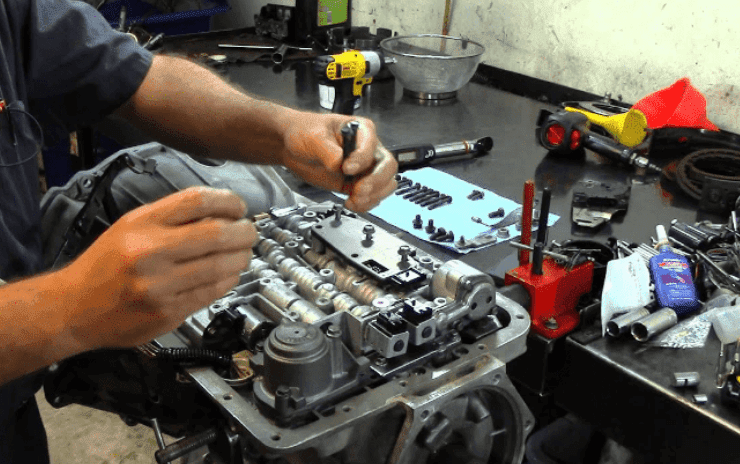4 Functions of hydraulic control unit in automatic transmission
The hydraulic control unit on an automatic car transmission combines several components to regulate the Automatic Transmission Fluid (ATF) to function hydraulically. Without ATF, the car's automatic transmission can't work correctly and perfectly.
Therefore, several components in the automatic transmission are needed that function as ATF regulators or what we call the hydraulic control unit components. The following are some examples of the main components of a hydraulic control unit, namely, oil pump, valve body, solenoid, regulator valve, transmission control module, and strainer (AT oil filter).
These components will work together to regulate the pressure and flow of hydraulic oil as needed when the car is moving. So what are the functions of the hydraulic control unit in this car's automatic transmission? The following are the four functions of the hydraulic control unit.
1. To generate hydraulic pressure
The first function of the hydraulic control unit is to generate hydraulic pressure. This function is driven by a component called the oil pump. The oil pump is located at the front of the transmission near the torque converter.
Therefore, when the engine rotates, it rotates the torque converter. The oil pump also rotates and produces hydraulic pressure for all components of the automatic transmission.
The system on the automatic transmission will use the hydraulic pressure for various purposes, such as moving the clutches and brakes or lubricating components that rub against each other.
2. Regulating and adjusting hydraulic pressure
The second function of the hydraulic control unit is to regulate and adjust the hydraulic pressure that the oil pump has generated. This function is performed by a manual valve connected to the gearshift lever via a manual linkage.
The manual valve is placed inside the valve body in automatic oil channels for pressurized oil to flow to each clutch and brake component. The manual valve will move according to the choice of letters on the gear shift lever when the shift lever is shifted.
A valve regulator in the valve body will regulate and adjust the hydraulic oil pressure so that the pressure generated is not excessive and damages other components in the automatic transmission.
Read Also:- Symptoms of bad clutch in automatic transmission
- How automatic transmission works?
- Difference between manual and automatic transmission
3. Perform gear shifting automatically
The third function of the hydraulic control unit is to perform gear shifting automatically. This function is carried out by the Transmission Control Module (TCM) as the main solenoids control. It is used to open and close the hydraulic line in the valve body according to the driving position and level of acceleration required.
Yes, the TCM has programmed data about when the gear shift must occur and which components in the automatic transmission must be active. This TCM will control and select which solenoids must work according to the choice of component data in the TCM, so that gear shifts occur according to driving conditions.
4. Lubricate all working components of automatic transmission
The last function of the hydraulic control unit is to lubricate all the working components of the automatic transmission. The oil pump and ATF oil perform this function. When the automatic transmission works, all the components will continue to rotate and rub against each other.
Each component needs ATF oil that works properly to lubricate the parts that rub against each other. That way, the performance of the components will not be disturbed, and the automatic transmission can work normally.
